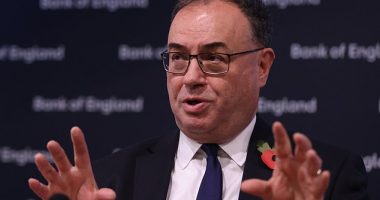
Homeowners’ hopes that mortgage costs will continue to tumble were dealt a blow this morning as new figures revealed inflation unexpectedly rose to 4 pc last month.
It was the first time the UK consumer prices index rate of inflation rose in ten months, after November saw it slow to 3.9 pc, the lowest level in more than two years.
Borrowers whose mortgage deals are coming to an end may have been considering holding off fixing on to a new deal in the hope that rates would continue to tumble in the near future.
Mortgage lenders have been slashing rates in recent weeks – NatWest, Metro Bank, TSB and HSBC this week alone.
But today’s higher-than-expected inflation figures may throw a spanner in the works by slowing down the recent rash of rate cuts. So, should homeowners lock into a deal – or hold out hope that rates may still fall further in the coming weeks?


Inflation figures revealed that inflation unexpectedly went up to 4 pc last month, the first time the UK consumer prices index rate rose in ten months
Should I lock in a fixed-rate mortgage?
Today’s inflation figures may put the brakes on the number of rate cuts borrowers have seen in recent weeks. That could mean it could take longer for substantially better mortgage deals to appear on the market.
That is because higher-than-expected inflation increases the likelihood that the Bank of England will delay cutting the base rate as it keeps it elevated to bring inflation under control.
Forecasters had previously expected the Bank of England to begin to cut its base rate as soon as May.
But today’s figures have dampened expectations, with economists now predicting the bank will begin to cut rates by June.
The yield on two-year UK government bonds jumped following the inflation announcement as markets adjusted their forecasts, in a sign that expectations of an earlier cut in interest rates had dampened.
The base rate currently stands at a 15-year high of 5.25 pc which has pushed up mortgage rates for millions of homeowners as the cost of borrowing money has become more expensive.
However, it is not a given that the poorer outlook early signs suggest that lenders may take the higher inflation figure outlook in their stride and continue to cut rates.
Santander and Skipton have already shrugged off the inflation rise to announce further cuts to their fixed-rate deals this morning.
How do I hold out for a better rate?
If you are due to remortgage, but do not want to lock in to a fixed-rate deal yet, the worst thing you can do is take no action at all and roll on to your lender’s standard variable rate (SVR).
Although it is true that you are not locked into an SVR and that their rates can fall should the Bank of England base rate fall, they are typically eye-wateringly expensive.
David Hollingworth, broker at L&C Mortgages, warns: ‘There’s a lot of good news in the market but that can mean that people hesitate about what to do even more.
‘Don’t fall onto an SVR. SVRs are much higher. Even if rates come down further in two or three months, SVRs will pretty much erode any savings you make.’
The average SVR was 8.18 per cent on January 1, according to MoneyfactsCompare, more than double the sub-four per cent five-year deals now available.


Mortgage lenders have been slashing rates in recent weeks – NatWest, Metro Bank, TSB and HSBC this week alone
However, if you don’t want to lock yourself into a fixed-rate deal in the hope that rates will fall in the near term, there is another option.
Rather than falling on to your lender’s SVR, you would be better off signing up for a tracker mortgage. These similarly move up or down in line with the Bank of England base rate, but are generally considerably cheaper than a lender’s SVR.
The average two-year tracker mortgage is currently 6.16 per cent, according to MoneyfactsCompare.
Among the best deals are a tracker mortgage from Barclays, currently at 5.39 per cent, which is set at the Bank of England base rate plus 0.14 percentage points. Leek Building Society has a tracker mortgage which is discounted to 4.99 per cent for two years.
Although tracker mortgages tend to be slightly more expensive than fixed rate deals, they do have other useful selling points if you believe rates will fall further in the near term and want to hold out for better. Firstly, unlike fixed-rate deals most tracker mortgages have no early repayment charges so you can ditch them whenever you do find a fixed-rate deal you’re happy to lock into. Secondly, most tracker mortgages rise and fall in line with the base rate, so – unlike with a fixed-rate deal – if interest rates do drop you will see your monthly costs fall.
What mortgage rate could I get now if I fixed?
The average two-year deal is now at 5.62 pc, down from a high of 6.86 pc last July, according to rate scrutineer Moneyfacts Compare.
Five-year deals have also fallen to 5.24 pc after peaking at 6.37 pc.
Lenders have been locked in a fierce price war for the past fortnight as they scramble to slash rates to lure in new customers.
Halifax, HSBC, Santander and Barclays have all announced large rate reductions in the past two weeks, making Nationwide Building Society the only major lender not to have taken an axe to its mortgage rates.


The figures may put the brakes on the number of rate cuts – this is because higher-than-expected inflation increases the likelihood that the Bank of England will delay cutting the base rate as it keeps it elevated to bring inflation under control
NatWest slashed its two and five year deals by up to 0.69 percentage points on Tuesday, making it the third major lender to offer five year deals below 4 pc.
Borrowers who want to switch deal and own 40 pc of their property will be able to secure a five year deal at 3.94 pc with a £995 fee.
Meanwhile, HSBC announced a second round of cuts to its five year deals on Tuesday, reducing its rates by up to 0.4 percentage points.
Homeowners with a 5 pc deposit can now lock into a five year deal at 4.99 pc with £350 cashback.
While this fresh wave of rate cuts is a promising start for homeowners in 2024, Andrew Montlake, of Coreco Mortgages, warns to not expect further cuts of the same rapid nature.
He said: ‘We do expect rates to continue to fall but not as dramatically as we’ve seen them do recently. In the past couple of days we’ve seen swap rates and gilt yields increase a little bit.’
Swap rates are financial measurements used by mortgage lenders to price their deals, based on what markets believe will happen to interest rates next.
How long should I fix for?
Ray Boulger, of broker John Charcol, argues that two-year fixes are better than longer-term fixes for households who want to see how the market pans out.
‘The difference between a two-year fix and a five-year fix is about half a percentage point. For those two years you’ll be paying half a percentage point more,’ he says.


The average two-year deal is now at 5.62 pc, down from a high of 6.86 pc last July, according to rate scrutineer Moneyfacts Compare
‘I would expect rates to be lower in two years’ time, but rates need to be at least 1 pc lower for the two-year fix to be worthwhile. The question is do you want to play the markets?’
For more cautious homeowners, the medium-term stability of a five-year fix will provide certainty on their biggest monthly payment, he adds.
It is also worth remembering that every time you remortgage, you may have to pay new fees. If you opt for a two-year deal, you could be on the line for more sets of fees than if you went for a five-year deal. You should factor in the impact of fees into your calculations.









